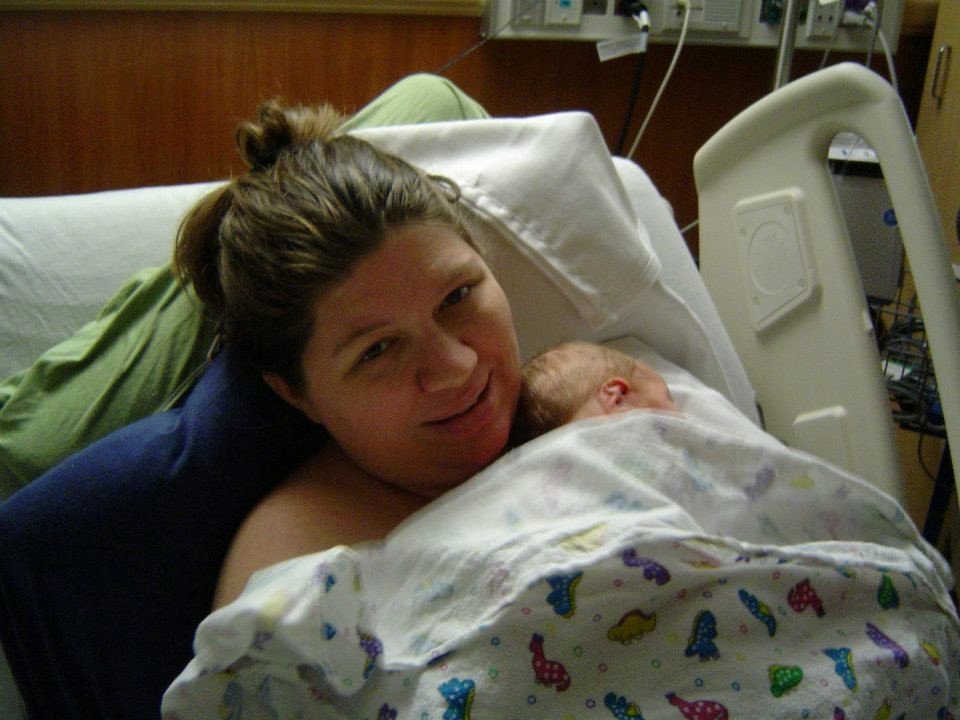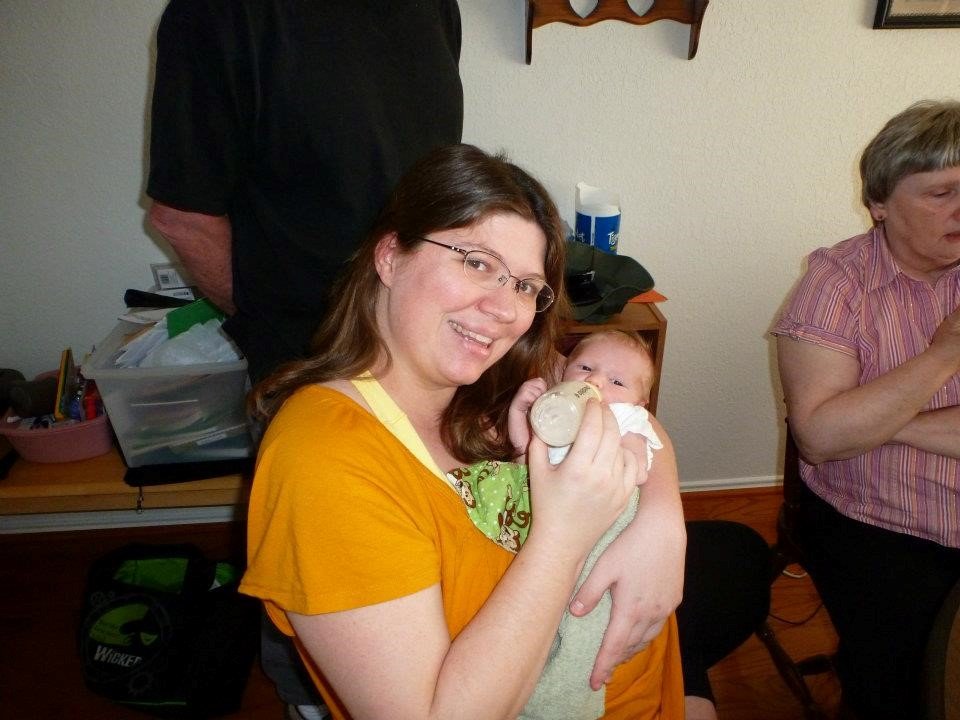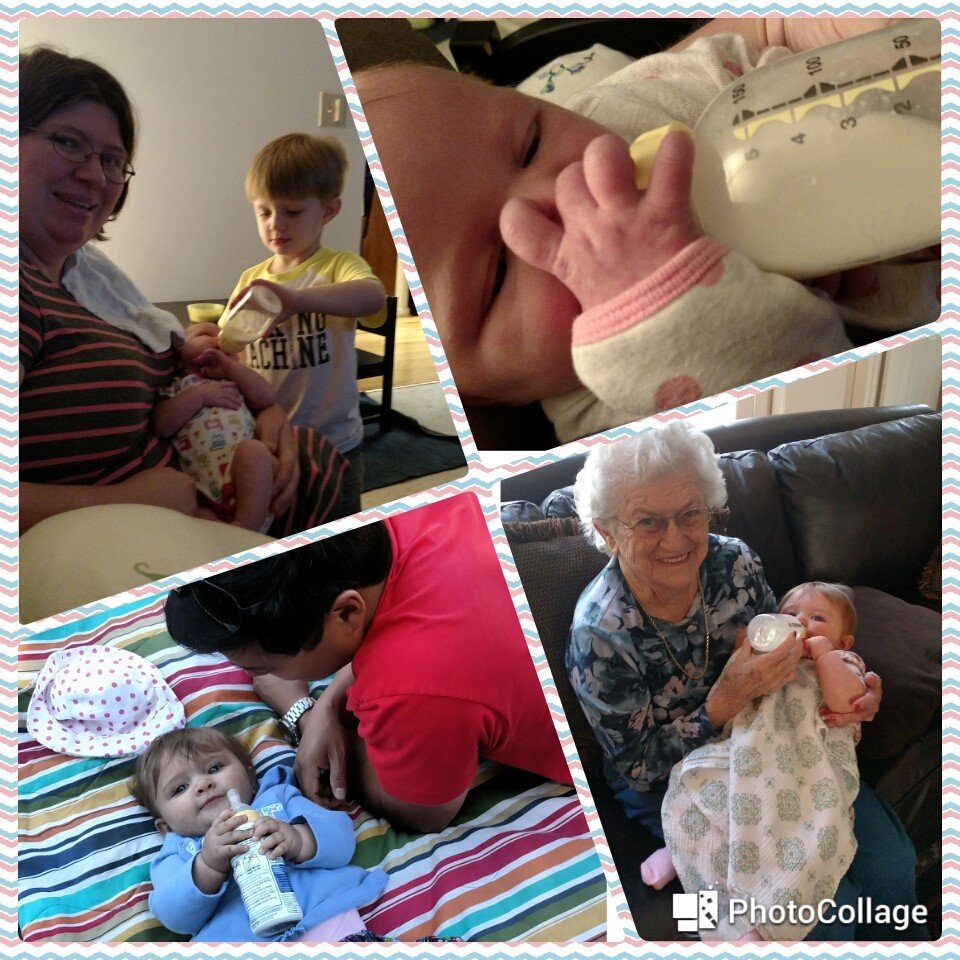Guest Blog: When Formula is Best for Baby
Former client C. shares with us her story about planning for perfection and her journey with feeding her children when things don’t go as planned. We thank her for sharing her story with us so that other mothers who have traveled similar paths know that they are not alone.
Baby B. Planning for Perfection
I am a planner – a worrier and a planner.
A worrier and a planner with PTSD, anxiety, mild OCD, and severe depressive bouts. So, before my husband and I started trying, I consulted my doctors and reduced my medications to the minimum needed to remain stable. When I saw those double lines, the first person I called was my psychiatrist. As we had discussed, I immediately decreased to the lowest therapeutic dose of a single Class C medication – untested in pregnancy, possibly dangerous for baby in the third trimester, and my best option. The “Best for Baby” plan was on.
Of course, I obsessed over every detail of how to make everything perfect, from conception to college, for my baby. From birth stories to peer reviewed articles, I read everything. As a trauma survivor, I needed to feel in control of myself and my body. The only way I could see to do that was a planned Cesarean. However, this was not considered to be the “Best for Baby” plan by many professionals. Studying the “better outcomes” literature led me to hire a doula, take a Bradley class with my husband, work out in the pool, and mentally prepare for my overdue, superlong, and intense yet intervention free labor which would end with a baby suckling on my breast. I even switched to a smaller OBGYN/mid-wife practice that was more supportive of those things. That was the plan.
Except:
Pregnancy induced hypertension – 28 weeks. Bed rest – 32 weeks. Two more hospital overnights. Admission for hospital bed rest – almost 34 weeks. Pre-eclampsia – 37 weeks. Attempted induction. 24 hours of hard labor. Failure to progress. Is he head up or down? Emergency C-section. With an ineffective epidural.
“Stop moving your legs,” they tell me as they cut through my layers. I scream “I don’t want this” as they yank me open to pull him out. “Shut up so we can do our jobs” the anesthesiologist mutters, not his first helpful comment of the evening. Ugly troll baby held above the curtain. Knockout drugs. I wake up in recovery with my doula. I already have post-partum depression – never want to see that hideous troll baby again.
1am – Our first meeting
As we wait for hours in our room, my husband shows me birth and nursery pictures. Baby B. looks more like a baby than I remember. He’s even a little cute. Maybe I love him. After too many calls to busy nurses , our “tax baby” arrives around 1 am, asleep. I’m tearing off clothes, getting ready for skin to skin nursing. I can do this. The nurse won’t. Baby B can’t. But he is amazing against my skin.
Early term baby. Too sleepy to latch, too sleepy to suck. Nothing could keep him awake long enough to nurse. Then, a lactation consultant brought the nipple shields for my imperfect nipples and a hospital grade pump for my supply. Baby B was losing weight, jaundiced. My body, which had failed to protect him, failed to birth him, was now failing to feed him. I had stopped taking my medication, with my psychiatrist’s permission, the night of the induction in preparation to breastfeed. I wanted to give him everything. I had nothing.
There was no sleep. No joy in staring at the clock, waiting through the hours for his next feeding. There was no hope. Nothing was right. Nothing was good. On day three, a nurse came in with SNS tubing and formula – further signs of failure. My husband had left because I was an exhausted, hormonal, uncontrollable ball of tears. I tried to manage all those parts by myself. I kept calling for a nurse, but they were busy. Was it because I spent most of my time practically naked trying to make this work? Cold wet cloths, nipple shield, SNS, formula….. Rivulets of lukewarm formula rolled down my stomach. Baby B slept against me, barely latched on the nipple shield. I tried taking my meds in the middle of the night just to get some relief, but they made me feel like I was going to jump out of my skin. All I could do was hobble-pace my room in post C-section agony. Alone. Just that cold white above the bed hospital light and despair. I hit a breaking point and took it to the lowest common denominator. Formula in bottle. Mommy hooked to pump. Wet cloths. And Baby B finally drank something.
I fought for my milk. Supplements. Lactation consultants. I lived my life in two hour cycles. Pump for 20 – 30 minutes. Clean equipment. Store milk. Remind myself that 15 milliliters of breastmilk is better than none. My milk could still come in. Hate clock. Lay down and stare at ceiling while my husband snores. Alarm. Keep Baby B. awake for two ounces. Repeat. For days, there was no sleep – only the thoughts racing in my head: the cycle, the fear, the worry, the desire to hold me baby without torturing him to eat, the hate for the pump, hate for my body. Only the obsession to make my body do what it was meant to do.
Day 10. 6:24 pm. 12 pumps in 24 hours. Total production: 2 oz.
Baby B. actually has his eyes open and is looking at me. My husband and I are sitting on the couch side by side. He has his arm around my shoulders, and there is a cat curling around my feet. Baby B. makes this funny little not cry sound, and we laugh. I look at the clock, and the cycle calls.
“Time to pump,” I say.
Baby B. is bottle fed pumped milk first.
“Why don’t you just stay and enjoy the baby a little longer,” he suggests.
“Because, I don’t want to lose what little supply I have.” A notebook waits upstairs – timed pumps recorded in milliliters, numbers like 8 or 10.
“He’s doing fine.”
I settle back a bit staring down at baby cheeks and fingers, really feeling the fuzzy warm blanket over my knees. Tears are falling now. What is failure? A body that couldn’t hold a baby? A body that couldn’t feed the baby? Is failure quitting this thing that I hate so much but know is so good for my baby? Is failure forcing myself to continue in this obsessive cycle that is destroying my relationship with myself and my family? Are we irreparably damaged already?
“Hide it,” I whisper. “I don’t care where. I just don’t want to find it any time soon.”
My tears fall on Baby B’s. cheeks. It’s all failure somehow. My husband nods and returns quickly to the couch.
I feed Baby B. the last of the breastmilk for bedtime that night. Then, I rock him to sleep. In our room, only a few pieces of detritus litter the field of the battle I lost – the notebook with its dangerous and defeating numbers stashed on a bookshelf and the pumping station that I quickly disperse. I wake up to the nightly alarms to feed Baby B., and there is milk dripping down my chest. I cry, but I don’t try to find the pump. The next day I wear cabbage leaves in my bra. Two days later, I follow up with my psychiatrist. Since I am not breastfeeding, I am able to take several drugs to help me sleep and lower my anxiety.
With our pediatrician’s guidance, we found a formula that suited Baby B’s. sensitive tummy, and I felt free to pursue what I needed for my own mental health and family stability. I enjoyed Baby B. so much more after the pressure, anxiety, fear, and obsession over making my body feed him was gone. There was guilt for a very long time. At one point, I even considered trying to re-lactate, but I worked through that emotional rollercoaster.
Baby B. is healthy and happy, and whether or not he liked them then, as a four year old, he will now say that my nipples are beautiful.
Baby A. – Planning for Perseverance
Baby A. was the second baby that I carried out of the first trimester and started to feel like I could plan for. I still believed in my “Best for Baby” plan. I knew I needed a doula to support me through my pregnancy, but I didn’t know if I wanted a VBAC or a repeat C-section. It was this giant black hole in my mind, sucking my time, thoughts, and energy away. My OBGYN practice did allow VBACs under the “right” conditions, but would I meet those? Could I plan for a VBAC? Could I wait for labor to start? Would they give me that time? Could I stand another failure at the trial of labor? What if it was all out of control again? What if I planned a C-section and the drugs didn’t work again? How would I feed her? Could I stand putting her to the breast and failing again? Could I spend all that time pumping when I already had one child to care for at home?
Emily was an amazing resource and support as a doula. We discussed my birth options with no judgements. I had already developed high blood pressure at 7 weeks of pregnancy – chronic hypertension. Age and previous pregnancy conditions made me a high risk pregnancy. With the millions of factors that could come into play, I was jealous of VBAC moms, but I needed the certainty of a schedule. I could not repeat the trauma of Baby B’s birth. She also followed up on my many appointments, helped me with my C-section birth plan, and helped me foray into the world of breastfeeding with low supply. I learned that the supplements that I used last time might have reduced my supply since I have hypothyroidism. I learned about Human Milk for Human babies. I began considering just how far I would to feed my baby breast milk.
Due to the high risk nature of my pregnancy, I spent a lot of time being monitored. As the weeks went by, trips to the hospital and the antenatal center increased. Sometimes, Babygirl (unnamed until 12 hours after birth) wouldn’t move for hours, or the regular OB was just unable to find her heartbeat with the Doppler. She also liked to laze around on stress tests and profiles, and my amniotic fluids kept dropping. My RCS was scheduled for 38 weeks exactly, but by 36 weeks, the specialists were threatening an early arrival. On August 18, two days before my scheduled procedure, a check revealed that my fluid levels were too low to sustain her. They gave me one hour to collect things from home and report to labor and delivery.
Emily and my husband kept me occupied while I got prepped. Emily held my hand and helped me focus through all the hateful needles, and she helped me communicate my fears and concerns to the anesthesiologist. I would have been scared out of my mind without her there to go through the calming techniques and things we talked about. I only wish the hospital would have let her join us in the OR.
Triumph.
Baby A started screaming the moment they pulled her out, and it was music. Then, it was torture. I couldn’t remember why they wouldn’t give me my baby. Finally, my husband got to hold her, and she quieted down a bit. Then, as we left the OR, the nurse asked me if I wanted her with me in the bed. I reached for her as best I could, and they laid her on my stomach. Without warning, my C-section baby who had already been cleaned and held by others started doing the breast crawl up my stomach! I had read about it, seen it in videos, but I never expected to feel it for myself. It was one of the most perfect moments of my life! My beautiful baby girl wanted me. As they wheeled me into recovery, I was shouting for Emily. “She’s doing the breast crawl! She’s doing it!”
Recovery was a blur. I think it was around midnight when we were finally settled in our room. First nights are always hard. Especially when you can’t leave the bed, but I was able to feed her when she cried. Milk was coming out of my breasts, and I had a baby drinking it. It hurt, but it was happening. I attended the hospital’s breastfeeding class in the mornings and saw the lactation consultants several times each day while I was in the hospital. I would prop baby A and I up on the bed, surrounded by pillows, and nurse her as we both dozed in and out for hours. It was bliss.
On our last day, the lactation consultant gave us a nipple shield and instructions to pump to keep the supply up. I tried to use the nipple shield, but it never went on right. I hooked myself up to my Spectra pump for exactly 20 minutes, producing nothing, and hating it so much that I cleaned the parts and hid it to where I still cannot find it now. Then, I nursed her as much as I could, as much as I could get her to drink.
It was Sunday night. Baby A had become lethargic. She hadn’t had enough wet and dirty diapers. Then, she started screaming. So, after an emotional call to Emily, I gave her a bottle. Later that night, I gave her another one. Emily came by, and I talked to her about comfort nursing and how every drop of breastmilk was important; ultimately, I decided I just needed to be done. I wish that I could have shared my body with her longer. However, I was not going to kill myself fighting the same losing battle I had fought with Baby A. After the bottle, all Baby A cared about was getting the milk quickly. She refused to latch, and after one session, I refused to pump.
So, once again, we opted to formula feed a baby. She’s happy and healthy and loves her solids as well as her “milk”. I assuaged a lot of my mommy guilt with both children by home-making their baby food and loading it with fresh fruits and meats and veggies and lots of mommy love. Bottles helped us work together as a family to meet Baby A’s needs and bond with her, and liquid or solid, that girl is always full.
Those are the things that are really important.





